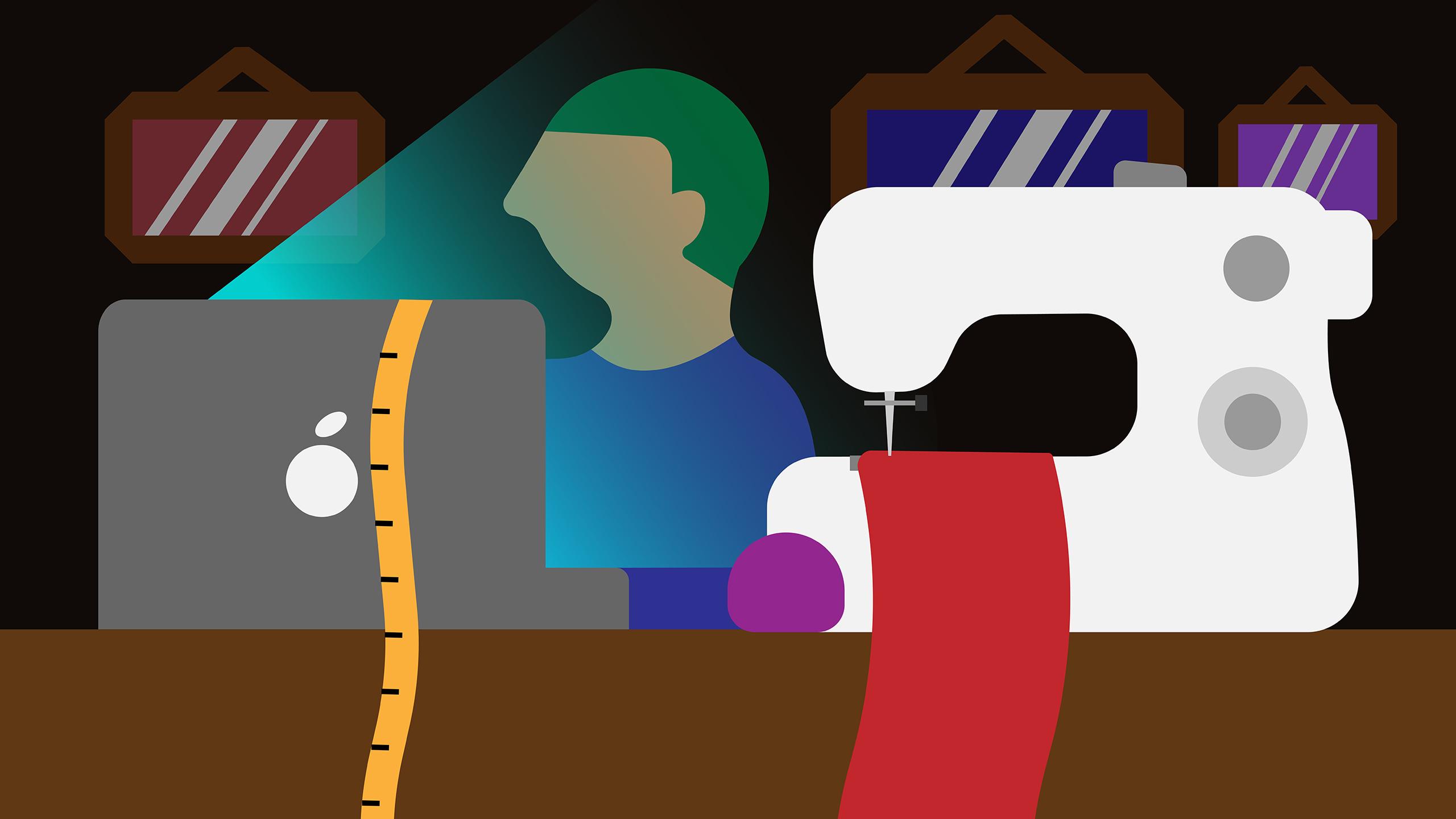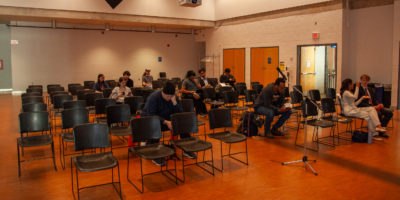By Racy Rafique
Classes are online this fall, but several programs at Ryerson are adjusting to provide students with the same type of hands-on experience they’d receive in-person.
Back in July, the university released an announcement via Ryerson Today stating that almost all faculties will offer remote-only learning for the fall semester.
For many of Ryerson’s programs, this was a drastic change from the hands-on curriculum professors previously provided.
To adapt, programs such as the RTA School of Media, fashion and architecture have been using a variety of tools to keep their students engaged virtually. This includes everything from lecturing entirely over a Minecraft server to mailing out 300-piece robot kits to students around the world.
“When you look through the learning outcomes and you think about how people are learning, a significant amount of it can take place online,” said Kathleen Pirrie Adams, the chair of RTA media. “It’s not what we want all the time, but there’s lots of opportunity for learning in different ways that have emerged over the last couple of months.”
RTA instructors have been given the freedom to decide how to structure their courses, with most choosing a mix between live and pre-recorded classes, said Adams.
For some, this means going beyond conventional video conferencing methods.
Alexandra Bal, a professor of new media, is teaching her first-year introductory course, “Creative Processes,” completely over Minecraft this semester. With the help of Discord, a popular gaming chat, it encourages student socialization and engagement, said Bal.
In an interview posted on the Faculty of Communications and Design (FCAD) website, Bal said using Minecraft as a teaching tool creates a social and collaborative environment in the students’ comfort zones.
“Many of our students have grown up in gaming, social media and other forms of digital media,” she said in the interview. “Letting them increasingly include these communication tools and culture in their education is preparing them for the new working environments they will build.”
Kristopher Alexander, also known as the professor of video games at Ryerson, uses gamer-friendly tools such as Discord and Twitch as well.
Alexander engages his students through a free software called Open Broadcasting Software. Through this software, he can automatically generate live subtitles to improve accessibility for students.
“The more we work on this platform, the more people will experiment with other options for sharing their work”
The three-hour class involves a lecture diving into video game theory and the industry, followed by discussions about assignments, to be topped off with a live game play-through—in which somebody in class is randomly selected to take control of Alexander’s computer and play a video game live in front of their peers.
The students then deconstruct that game, discussing theory and applying readings from the week.
“I was told that we weren’t supposed to teach for maybe longer than half an hour, but I planned for three hours and the students, they didn’t even want a long break,” Alexander said. “They said, ‘We don’t want 20 minutes, we want 10, let’s get back to it!’”
For fashion professor Danielle Martin, engagement in her class means creating as much of an in-class atmosphere as she can.
Although she’s able to have students turn their cameras on and show the class their artwork over Zoom to cultivate a similar experience, she has had to make some changes.
In order to keep the class as realistic as possible, Martin still employs live models over Zoom, so students can speak to the models and ask them to move into certain positions as they sketch them.
Previously, these models posed nude in person.
“We don’t sketch the models nude because it’s online…even if we asked [students] to not take screenshots, you never know,” she said. “It’s their image and their privacy, so we ask them to model clothed.”
Students also now have the option to sketch family members or friends—fully clothed—if they miss an online sketching session with the model.
Architecture professor Cheryl Atkinson’s goal is to simulate a studio-workshop environment for her students online by experimenting with the collaboration platform Miro.
Through the software, students can remotely create projects and designs together, interacting with and editing each others’ work in real-time, as if they were sitting together in an actual studio.
Although the in-person atmosphere and collaboration is something that cannot quite be replicated, working online has some unforeseen benefits, said Atkinson.
“You can get a close detailed view at student work, versus sitting in a large room and having it projected on the wall…and they’re getting creative,” she said. “The more we work on this platform, the more people will experiment with other options for sharing their work.”
Steve Daniels, program director and professor of Ryerson’s new media program, teaches a course called Tangible Media.
The course is an introduction to physical computing and electronics for artists and creatives. It gives students with no previous experience with these subjects an opportunity to create real-world interactive systems and simple robots.
A key part of this course is an electronics kit that Daniels and his team have been developing and providing to students in-person for years.
Included in the kits are robot bodies designed and laser cut in the FCAD FabLab that students assemble and personalize themselves, as well as a set of sensors and custom circuit boards that the team has developed, among other starter components.
Although students from hands-on programs have voiced concerns about online learning, some believe that this new normal is providing many benefits as well.
“I think having everything online does cut down on all travel times. There’s no set place I need to be. So that gives me a lot more empty time in my day that I can spend doing the readings and making accurate notes,” said first-year acting student Sebastian Reimer.
Reimer said that connecting with peers and professors online instead of in-person seems difficult to imagine currently, but he has high hopes that teachers will provide creative solutions to the online barrier.










Leave a Reply